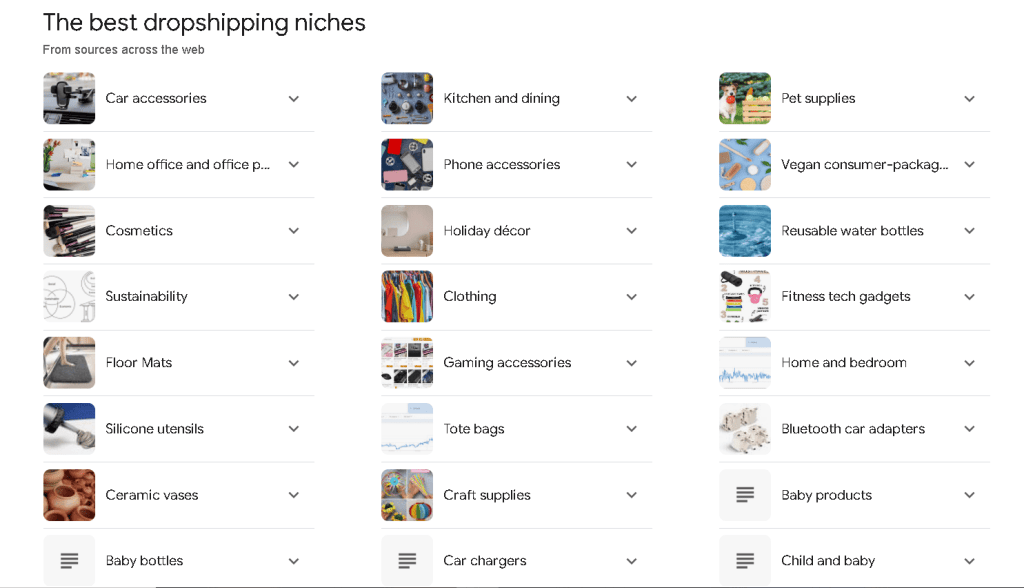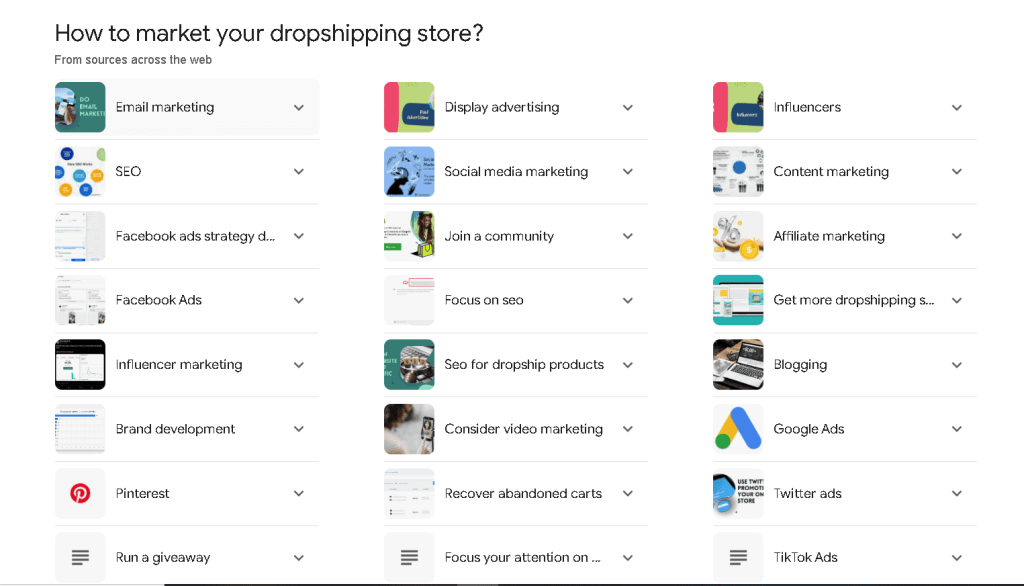Last Updated on January 24, 2025 by Gavi

Are you ready to dive into the exciting world of entrepreneurship and start your own Shopify dropshipping store? With minimal upfront investment and no need for inventory storage, dropshipping has become a popular way to build a profitable online business.
Start a Free Shopify Trial ($1/month): Get Started with Shopify
In this comprehensive guide, we’ll walk you through everything you need to know to successfully launch your Shopify dropshipping store from scratch.
1. Understanding Dropshipping and How It Works
Before diving into the practical steps, it’s crucial to understand what dropshipping is.
Dropshipping is a business model where you sell products to customers without holding any inventory. Instead, when a customer places an order, the supplier ships the product directly to the customer. Here’s how the process works:
- Step 1: A customer visits your Shopify store and places an order.
- Step 2: You forward the order to your supplier.
- Step 3: The supplier ships the product directly to the customer.
Benefits of Dropshipping
- Low startup costs: No need to invest in inventory upfront.
- Location flexibility: You can manage your store from anywhere.
- Wide product range: You can sell a variety of products without worrying about stocking them.
2. Preparing to Launch Your Shopify Dropshipping Store
Before building your store, there are a few key preparations to make:
Choose Your Niche

Selecting the right niche is critical. A niche is a specific market segment that you target. Here are some tips for choosing a profitable niche:
- Look for trending products with steady demand.
- Avoid highly saturated markets.
- Focus on products you’re passionate about.
Some popular niches include fitness, home decor, pet products, and fashion accessories.
Conduct Market Research
Market research helps you understand your competitors and potential customers. Use tools like Google Trends, social media platforms, and competitor analysis tools to gauge demand and identify gaps in the market.
Find Reliable Suppliers
The success of your dropshipping business depends on your suppliers. Some popular dropshipping platforms to find suppliers include:
- Oberlo (integrated with Shopify)
- AliExpress
- Spocket
- CJDropshipping
Choose suppliers with positive reviews, reliable shipping times, and quality products.
3. Setting Up Your Shopify Store
Now that you’ve completed your initial research, it’s time to set up your Shopify store.
Step 1: Sign Up for Shopify
Go to Shopify.com and sign up for a free trial. Shopify offers a user-friendly interface, making it easy for beginners to set up their online store.
Step 2: Choose a Domain Name
Pick a domain name that’s relevant to your niche and easy to remember. Your domain name helps establish your brand identity and builds trust with customers.
Step 3: Select a Shopify Theme
Shopify offers a variety of free and paid themes. Choose a theme that aligns with your brand and provides a seamless user experience. Make sure the theme is mobile-friendly since a significant portion of online shopping is done via mobile devices.
Step 4: Customize Your Store
- Add your logo and brand colors.
- Create a captivating homepage that highlights your best-selling products.
- Organize your product categories for easy navigation.
4. Adding Products to Your Store
Step 1: Import Products
Using dropshipping apps like Oberlo or DSers, you can import products directly to your Shopify store from suppliers.
Step 2: Write Compelling Product Descriptions
Your product descriptions should be engaging and informative. Here are some tips for writing product descriptions:
- Highlight the benefits, not just the features.
- Use persuasive language and storytelling.
- Include customer reviews or testimonials if available.
Step 3: Add High-Quality Product Images
High-quality product images can make or break a sale. Use professional images and, if possible, add multiple angles and lifestyle shots to showcase the product in action.
5. Setting Up Payment and Shipping Options
Payment Options
To receive payments from customers, you need to set up a payment gateway. Shopify supports various payment options, including:
- Shopify Payments
- PayPal
- Credit and debit cards
Choose payment methods that are convenient for your target audience.
Shipping Settings
Define your shipping rates and policies. You can offer free shipping, flat rates, or real-time carrier rates. Consider your supplier’s shipping times and costs when setting expectations for delivery.
6. Designing Essential Pages
To make your Shopify store professional and trustworthy, you need to include the following pages:
- About Us: Share your brand’s story and values.
- Contact Us: Provide an easy way for customers to get in touch.
- Privacy Policy: Assure customers that their data is safe.
- Refund and Return Policy: Clearly outline your refund and return process.
7. Launching Your Shopify Dropshipping Store
Before launching, double-check the following:
- Your store’s design and navigation.
- Product descriptions and pricing.
- Payment and shipping settings.
Once everything is set, it’s time to launch your store! Share your store link on social media, email lists, and other platforms to spread the word.
8. Marketing Your Shopify Dropshipping Store

To attract customers and drive sales, you need a solid marketing strategy. Here are some effective marketing methods:
Social Media Marketing
Create engaging content on platforms like Instagram, TikTok, and Facebook. Post product photos, behind-the-scenes content, and customer reviews to build brand awareness.
Influencer Marketing
Partner with influencers in your niche to promote your products. Influencers can help you reach a larger audience and build credibility.
Email Marketing
Build an email list and send regular newsletters with product updates, discounts, and promotions. Email marketing is a cost-effective way to nurture customer relationships.
Paid Advertising
Invest in paid ads on platforms like Google Ads, Facebook Ads, and Instagram Ads to target specific audiences and boost traffic.
9. Providing Excellent Customer Service
Customer service is key to building a loyal customer base. Here’s how you can provide top-notch service:
- Respond to customer inquiries promptly.
- Address any issues with empathy and professionalism.
- Offer live chat support if possible.
Start a Free Shopify Trial ($1/month): Get Started with Shopify
Happy customers are more likely to leave positive reviews and recommend your store to others.
10. Analyzing and Optimizing Your Store
Once your store is live, monitor its performance using Shopify’s built-in analytics. Track metrics like:
- Traffic sources: Where your visitors are coming from.
- Conversion rate: The percentage of visitors who make a purchase.
- Abandoned carts: Customers who add items to their cart but don’t complete the purchase.
Use this data to optimize your store’s design, pricing, and marketing strategies.
11. Scaling Your Shopify Dropshipping Business
As your business grows, consider these strategies to scale:
- Expand your product range: Add new products that complement your existing ones.
- Outsource tasks: Delegate tasks like customer service, order processing, and marketing.
- Offer bundles and upsells: Encourage customers to buy more by offering product bundles and upsell options.
12. Common Dropshipping Mistakes to Avoid
To ensure success, avoid these common mistakes:
- Choosing unreliable suppliers: Always vet your suppliers carefully.
- Underestimating shipping times: Be transparent about delivery times to avoid customer frustration.
- Lack of customer support: Don’t overlook the importance of timely communication.
13. Frequently Asked Questions (FAQs)
1. How much money do I need to start a Shopify dropshipping store?
- You can start with as little as $50 to $200 for a basic setup, including a Shopify subscription, domain name, and initial ad budget.
2. Do I need a business license for dropshipping?
- This depends on your location. In many regions, you can start without a license, but it’s advisable to check local regulations to ensure compliance.
3. How long does it take to start making sales?
- With a solid marketing strategy, you can start making sales within the first few weeks. However, consistent effort and optimization are key.
4. Can I run my Shopify store from my phone?
- Yes! Shopify has a mobile app that allows you to manage your store, track orders, and respond to customers on the go.
5. What are the best products to dropship?
- Trending products such as gadgets, fashion accessories, home decor items, and fitness gear typically perform well. However, focus on solving a problem or offering unique value.
6. How do I handle returns and refunds?
- Set clear refund and return policies on your store. Most suppliers allow returns, but you may need to coordinate with them and handle customer communication.
7. What’s the difference between Oberlo and Spocket?
- Oberlo connects primarily to AliExpress, offering low-cost products, while Spocket provides access to suppliers in the US and Europe for faster shipping.
8. Is Shopify good for beginners?
- Yes, Shopify’s user-friendly platform, extensive resources, and support make it an excellent choice for beginners.
9. How do I improve my store’s conversion rate?
- Optimize your product pages with clear images, compelling descriptions, and social proof. Also, ensure that your website loads quickly and is mobile-friendly.
10. How do I build customer trust?
- Display reviews, create a professional design, and provide secure payment options. An “About Us” page and transparent policies can also help build credibility.
Final Thoughts
Starting your own Shopify dropshipping store is an exciting journey that requires dedication, research, and consistent effort. By following this step-by-step guide, you can set yourself up for success and create a thriving online business. Remember to stay adaptable, keep learning, and prioritize your customers’ needs. With the right approach, your Shopify store can become a profitable venture that supports your financial goals.
Start a Free Shopify Trial ($1/month): Get Started with Shopify
Ready to take the first step? Sign up for Shopify today and turn your dream of running an online store into reality!